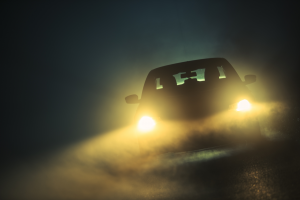INDEPENDENT DEALER
Katy, TX | (281) 746-8893
OUR BLOG
Dreading nighttime drives? Worried about low visibility and safety? Become confident in navigating after dark! Mainstreet Performance LLC in Katy shares their top tips for safe driving at night.

Give your engine the gift of top-tier protection with AMSOIL synthetic oil. Call Mainstreet Performance LLC at (281) 746-8893 for expert advice on the best lubricants and car care products in Katy. Top off your supply easily with convenient online ordering at AMSOIL's website.
Gearing Up for Nighttime Adventures
We all know taking the wheel after dark comes with its own set of challenges. It's harder to see the road ahead, and you're more likely to feel tired, which slows down how fast you react. Fortunately, there are simple ways to make driving at night safer. Here are some tips:- Be Well-Rested: Drowsiness is a night driver's worst enemy. Ensure a full night's sleep before a long drive.
- Plan Your Path: Unfamiliar roads and two-lane highways can be particularly tricky at night. Opt for well-lit, familiar routes.
- Car Care Counts: A well-maintained car is a safe car. Ensure your headlights, taillights, and turn signals are in top condition. Before a long night trip, check tire pressure and tread depth for optimal performance.
See Clearly, Be Seen Clearly: Optimizing Visibility
A clean windshield and mirrors are your key to a clear view of the road at night. Streaks and grime can cause glare and significantly reduce visibility. So, be sure to invest in a good quality windshield wiper for crystal clear driving enjoyment. Next, check your headlights. Misaligned beams are a double troublemaker: they blind oncoming drivers and leave you partially in the dark. Don't let these crucial lights become a safety hazard! Get them adjusted by a professional for a safe and bright journey. Even the little things matter. While helpful in the day, that dome light can become a foe at night. Its bright light disrupts your night vision and creates distractions. Use the dimmer setting or switch to red-tinted bulbs. With a night-vision-friendly interior, you'll be cruising comfortably and safely.Protect your engine with advanced formulas, like AMSOIL Signature Series 5W-50 100% Synthetic Motor Oil. Order yours at Mainstreet Performance LLC in Katy anytime! Call them at (281) 746-8893 or shop online for extended engine life and peak performance.
Headlight Etiquette
A little courtesy goes a long way when it comes to headlight use. Here's the key:- Low beams are your best friend on a crowded road. They illuminate the path ahead without blinding oncoming traffic.
- High beams are best on unlit, empty roads. They improve visibility on long, empty stretches of country highway. But remember, great power comes with great responsibility! Switch back to low beams when you see even a hint of headlights in the distance. No one enjoys being dazzled on the open road.
Foggy Nightmare? Lights to the Rescue!
Fog can turn a scenic drive into a blurry mess. To avoid a pea-soup situation, check your local fog light regulations. These low-mounted beams can cut through the haze, making you more visible to others.Bonus Tip: Be a Beam Team Player!
Sometimes, oncoming headlights can leave you momentarily blinded. So don't panic! Look away for a second, let your eyes adjust, and refocus on the road. Likewise, be courteous and turn off your headlights quickly to avoid dazzling others.Defensive Maneuvers for Nighttime Success
Lastly, let's unpack a few defensive driving maneuvers that will make you a nighttime master:- Double Down on Distance: Nighttime calls for a healthy dose of caution. That said, embrace the 4-second following distance rule. Doing this will give you ample time to react to surprises.
- Nighttime = Focus Time: Distractions are enemies of the road, especially at night. Silence the ringtones, put down the phone (seriously, that text can wait!), and turn down the music if it's hindering your focus.
- See in the Dark: Pedestrians and wildlife can blend into the shadows at night. Be a night detective – scan the sides of the road for reflective clothing and keep an extra eye out in areas known for animal crossings.
- Slow and Steady Wins the Race: Night driving is all about control. Reduce your speed to match the lower visibility. This gives you more time to react to potential hazards and makes the ride smoother for everyone.